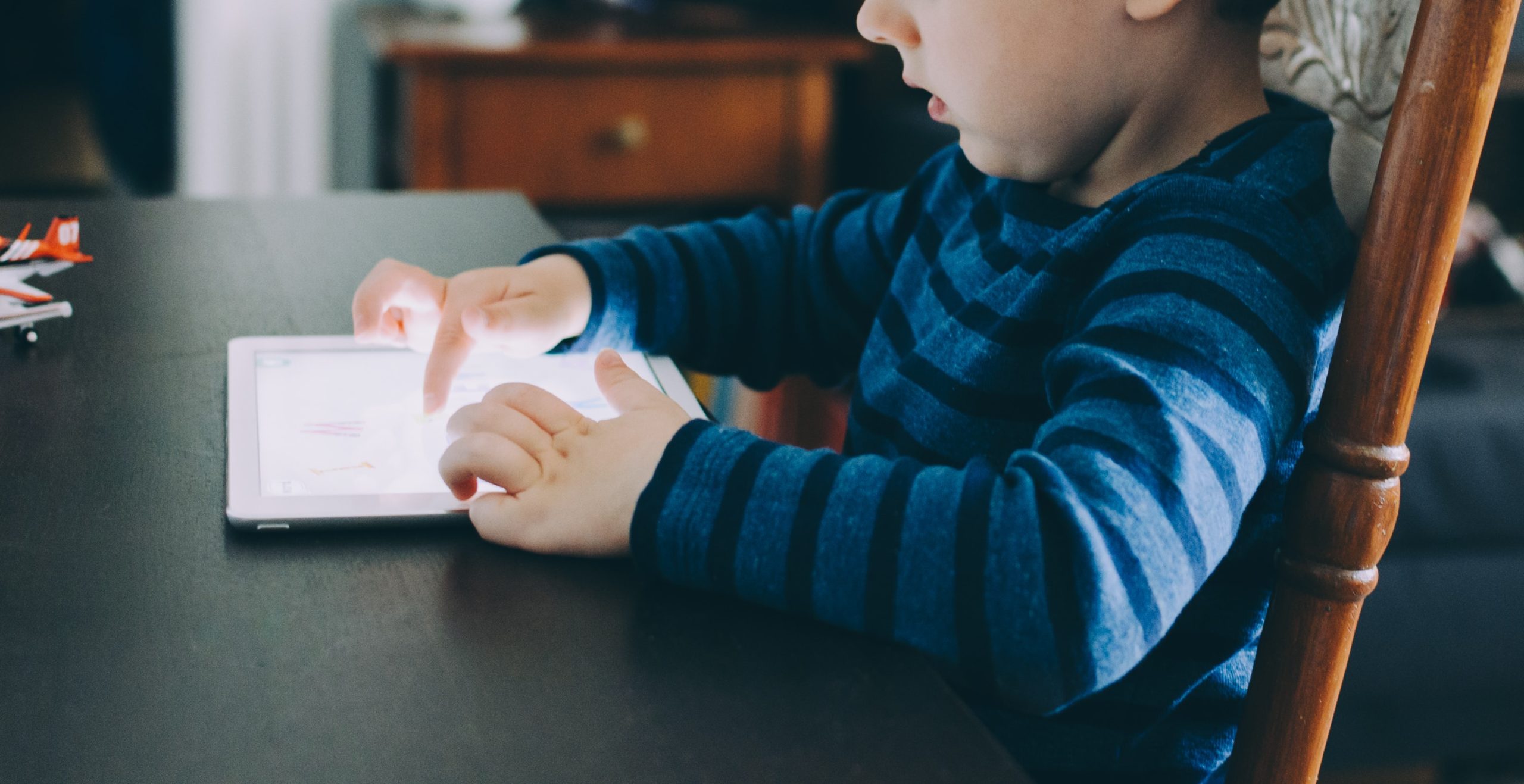These days, children encounter screens nearly everywhere they go. While screens can be a powerful educational tool, they can also present some risks to the developing child’s health. Here’s what you need to know about children and screen time.
Pre-K Risks and Recommendations
In a child’s first five years of life, it’s best to limit screen time as much as possible. Excessive use of screens can cause trouble sleeping and interfere with time better spent doing other social, physical, and hands-on learning activities.
The American Academy of Child & Adolescent Psychiatry (AACAP) recommends only using screens for video chatting with adults, such as an out-of-town parent, for children under 18 months. Between the ages of 18 and 24 months, screens should only be used for educational programming alongside a caregiver. From age 2 to 5, the AACAP recommends just one hour of noneducational screen time on weekdays and no more than three hours a day on weekends. Note that “screens” include televisions, not just handheld devices.
Elementary School Risks and Recommendations
Elementary school children who have more than two hours of screen time a day are more likely to have social, emotional, and attention problems. Elementary-age kids with screens in their bedrooms typically perform worse on tests, perhaps due to difficulty sleeping or the further development of attention problems. The risk of obesity due to overeating and lack of exercise also increases alongside the increased use of screens.
Children are especially susceptible to sleep problems caused by screens that emit blue light, which reduces melatonin production and feelings of sleepiness. The AACAP recommends removing all screens from the bedroom 30 to 60 minutes before bedtime. Parents are encouraged to closely monitor what children watch or play on screens so they can guide them toward educational programming or interactive games that encourage creative thinking and strategic play. Children should also get at least 60 minutes of physical activity each day.
Middle School Risks and Recommendations
As middle school students branch out into more mature programming, they may encounter a greater degree of violence, which can desensitize their developing brains to this type of activity. At this age, children are more independent, so parents need to impose stricter limits on screen use. This may include setting daily or weekly limits on the child’s devices. Parents should also limit background TV, keep screens out of the bedroom, and create pockets of screen-free time. Many wifi routers and devices are now equipped with parental controls for this purpose.
High School Risks and Recommendations
Adolescents spend an average of 8.6 hours on screens every day. Of the movies that adolescents typically watch, 93% feature alcohol use and 22% have references to drugs. Of these, only 23% show negative consequences. One study of ninth-grade students showed that for each hour of television viewed, the likelihood of alcohol use within the next 18 months increased by 9%. It’s important for parents to monitor media consumption at this age and provide guidance for teens who are on the verge of making major choices about drug and alcohol use.
There’s a lot to consider when it comes to children and screen time. Your health care provider at JCMC is a valuable resource for personalized recommendations tailored to your child’s individual needs. Ask your doctor about any concerns you may have with screens and your child’s health. Encourage your adolescent to speak privately with their healthcare provider and assure them privacy—their healthcare provider can be a trusted advisor during these challenging years.







